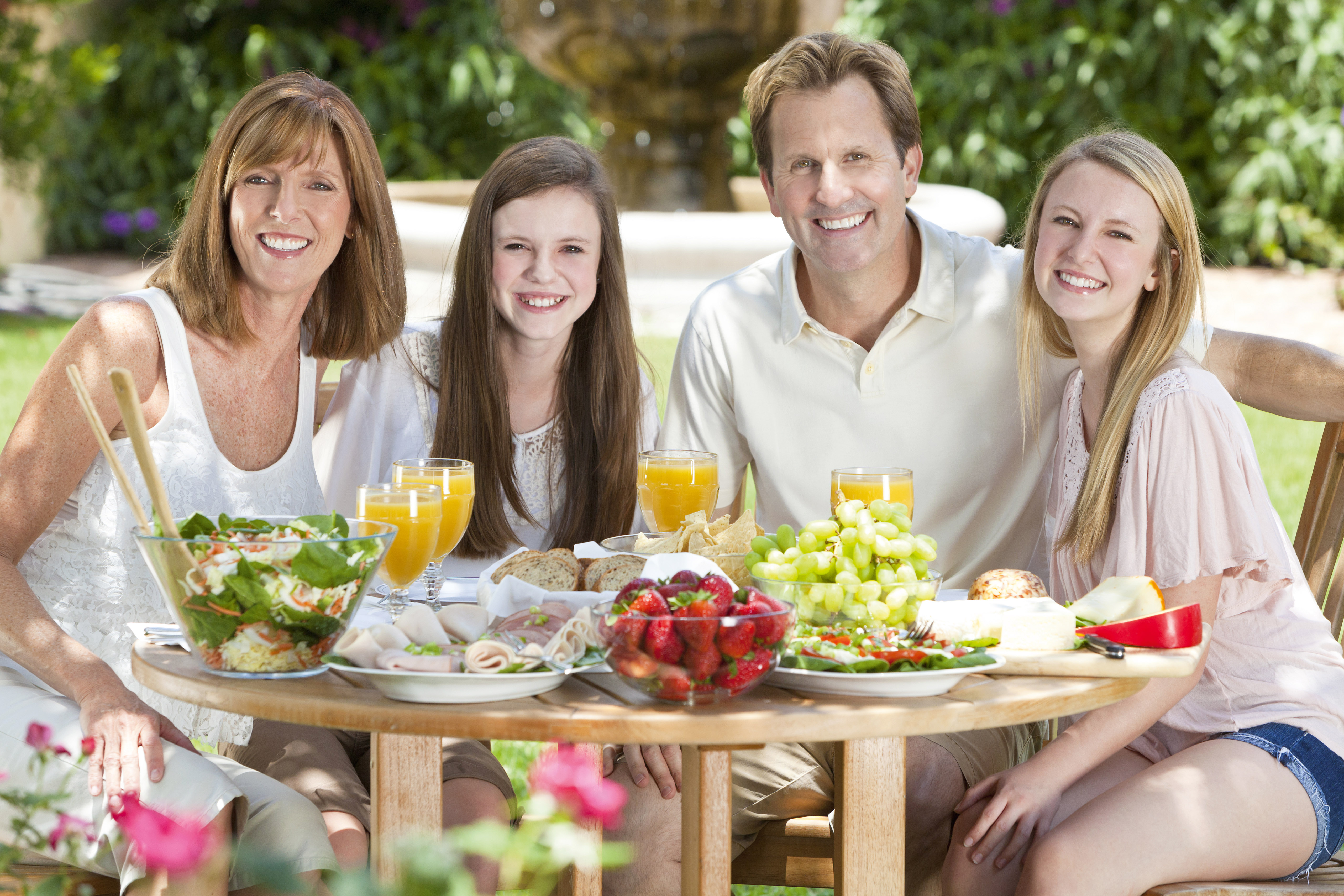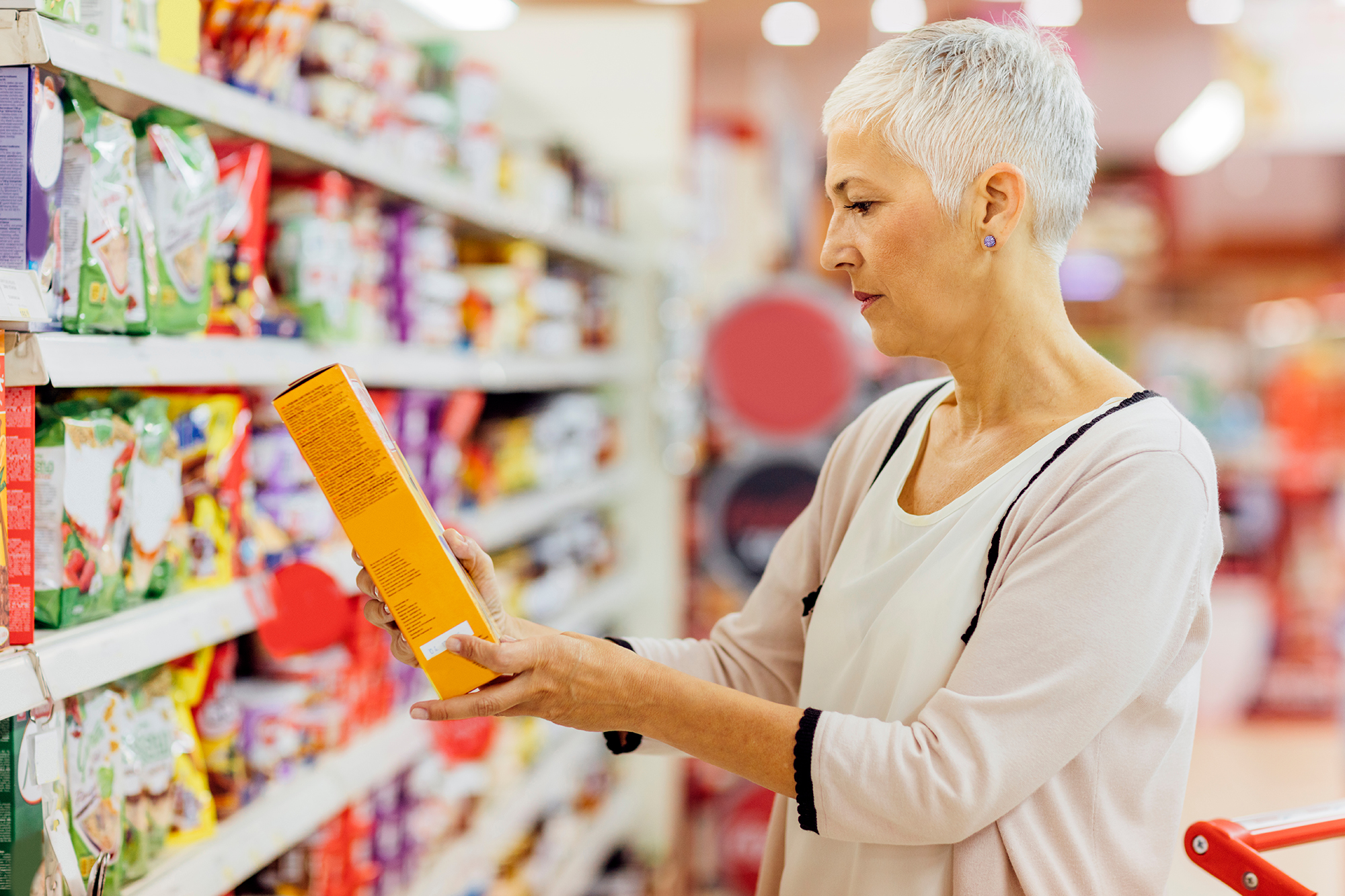The five fundamentals of healthy eating
Welcome to our information pages on the five fundamentals of healthy eating.
The five fundamentals of healthy eating will set you on the right path to reducing your cancer risk and eating your way to good health. It is also important to remember that a healthy diet will help you to maintain a healthy body weight, which can itself reduce the risk of many cancers.
Go bananas for fruit and veg
Fruit and vegetables are a vital part of a healthy diet. They are an excellent source of many important nutrients such as vitamin A, vitamin C, vitamin E and folate, and are a superb source of fibre. Research tells us that people who eat at least five portions a day have a lower risk of heart disease, stroke and cancer of the mouth, stomach and oesophagus (foodpipe).
Our advice
We recommend that you eat plenty of fruit, vegetables and salad – at least five portions a day. Choose a wide variety of brightly coloured fruit and vegetables as this will help you get a broad range of nutrients.
What counts as a portion?
This table gives you examples of what counts as one portion of fruit and veg. When we refer to a cup, we mean an average disposable plastic cup. This is the same as around one handful.
| Fruit | Vegetables |
|---|---|
| 1 medium banana | ½ cup of cooked carrots, turnips or parsnips |
| 1 medium apple, orange, peach or pear | ½ cup of cooked cauliflower or broccoli |
| 2 small plums, apricots, or mandarins | ½ cup of peppers or mushrooms |
| 6 strawberries | ½ cup of cooked peas |
| 10 grapes | ½ cup of cooked lentils, red kidney beans or chick peas |
| ½ cup of blueberries | 1 cup of lettuce, tomato or cucumber |
Top tips
- Smoothies, vegetable soups, stews and casseroles are a great way to rack up your five a day.
- Remember fruit juices are high in sugar, so keep to one serving per day (150 ml).
- Stock up on canned fruit and vegetables. They won’t go off, so you can buy them in bulk. Buy those canned without added salt or sugar.
- Buy fruit and vegetables loose rather than pre-packaged. Loose fruit and veg are usually much cheaper.
- In a restaurant, try to order a starter, side vegetable or salad that will count as one portion.
- If you’re having a takeaway, think about how you can add a portion of vegetables. If you have a Chinese, for example, add stir-fried vegetables. When ordering a pizza, ask for extra peppers or mushrooms on top.
Fill up on fibre
Fibre is an important part of a healthy diet. A diet high in fibre has many health benefits. It can help prevent heart disease, diabetes, weight gain, and improve digestive health. Eating lots of fibre will also reduce your risk of bowel cancer. Fibre-rich foods include:
- Fruit and vegetables
- Wholemeal and wholegrain bread
- Brown rice and pasta
- Pulses such as peas, beans and lentils.
Our advice
We recommend that you increase the fibre in your diet by choosing wholegrain foods whenever possible, such as wholemeal bread and brown rice or pasta. Many fruits and vegetables also contain lots of fibre, especially peas, spinach, pears, berries, apples, and avocados. Other fruit and vegetables that contain fibre include Brussels sprouts, green beans, broccoli, corn, spinach, carrots and oranges.
Top tips
- Swap corn flakes for bran flakes and add some raisins.
- Try adding pulses such as beans or lentils to soups and salads.
- Substitute wholegrain flour for half or all of the white flour when baking. Wholegrain flour is heavier than white flour so use a bit more yeast or let the dough rise longer.
- Try adding crushed bran cereal or porridge oats to muffins and cakes.
- Make snacks count by eating raw vegetables, fruit or a handful of dried fruit.
Red alert on red and processed meat
Meat is rich in valuable nutrients such as protein and iron. But eating lots of red and processed meat can increase your risk of bowel cancer and possibly stomach cancer. Red meat includes beef, pork and lamb. Processed meat includes sausages, rashers, bacon, ham and salami.
Our advice
We recommend that you do not eat more than 500g of cooked lean red meat every week. This is the same as about 800g of raw lean meat. We advise you to limit or avoid processed meat altogether. How much is 500g of red meat? The following table is a rough guide to the weight in grammes of cooked meat.
| Red meat | Cooked weight |
|---|---|
| Pork or lamb chop | 75g |
| ‘Quarterpounder’ beefburger | 90g |
| Medium portion of roast beef, lamb or pork | 90g |
| Medium steak | 145g |
Top tips
- Instead of rashers and sausages for breakfast, have poached or scrambled eggs.
- Have spicy chicken on your pizza, instead of pepperoni.
- Replace red meat with fish, chicken or other forms of poultry whenever possible.
- Try a meat-free day every week. Use peas, beans or lentils instead of meat in your recipes.
Think before you chew the fat
All types of fats and oils are very high in calories. While fats are a necessary part of our diet, a high-fat diet can increase your risk of cancer, heart disease and other conditions. And there is evidence that eating too much saturated fat may increase your risk of breast cancer.
Some fats and oils help protect against heart disease, but they are just as high in calories as other more harmful fats and oils.
Our advice
Eat as little fat as possible. In particular, try to cut down on saturated fats. Saturated fats are found in fatty meat, biscuits, crisps, pastries, cream and butter.
We are not telling you not to enjoy foods such as biscuits, crisps and chocolate as an occasional treat. But the key is not too much and not too often!
Top tips
- Choose reduced fat spreads as they contain less fat and more water.
- Choose lean cuts of meat and semi-skimmed or skimmed milk.
- Use oil in cooking very sparingly. Try steaming, baking, braising or grilling instead.
Don’t take it with a pinch of salt
In Ireland we take almost twice as much salt as we need. Too much salt can also increase your blood pressure and your risk of heart disease and stroke. Foods that are high in salt can also increase your risk of stomach cancer.
Many foods contain salt, such as breads and processed foods like meats, ready meals and pizzas, sauces, crackers, cakes, snack foods and cereals. Food does not have to taste salty to have high levels of salt in it.
Our advice
Try not to eat too many salty foods and cut out salt when cooking and at the table. Always check the label of processed foods and ready meals for salt content. As a rule of thumb, more than 1.3g is considered a lot of salt and less than 0.3g is considered a little salt.
Top tips
- Use mainly fresh ingredients when cooking
- Choose foods low in salt – try spicy flavours instead
- Cut out salt when cooking and at the table
- Flavour foods with black pepper, herbs, lemon juice, garlic and spices
For more information
Phone
1800 200 700



